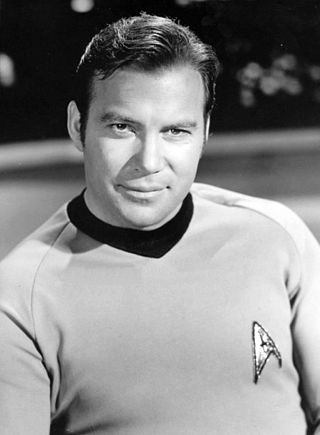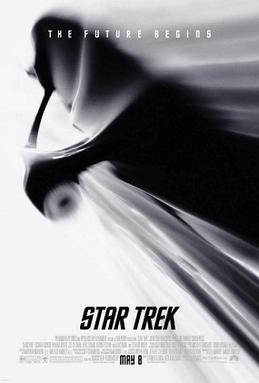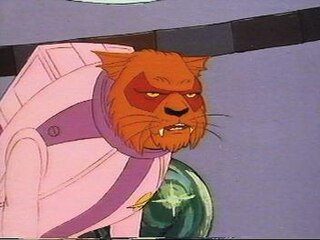Production
Writing and casting
The plot of the episode has origins in the 1970s. Marc Scott Zicree was attending a Clarion Science Fiction Writer's Workshop, and afterwards completed his undergraduate degree at the University of California, Los Angeles (UCLA). While there, he saw that a class was being conducted by Theodore Sturgeon; Zicree snuck in since undergraduates were not allowed to attend. This resulted in Zicree meeting Michael Reaves, who was acting as the teacher's assistant for the lecture; the two became close friends. Around the same time, Reaves pitched a Sulu-based story for Star Trek: Phase II , but after the series went unproduced, the plot was never completed. The two maintained a friendship over following decades, [1] as both launched LA-based writing careers around the same time, working extensively in animation and science fiction, sometimes on the same shows. Amongst many other credits, Reaves wrote the Star Trek: The Next Generation episode "Where No One Has Gone Before" with Diane Duane. [2] Zicree, meanwhile, amongst his many credits, received a "story by" credit on one episode of Star Trek: The Next Generation ("First Contact") and a similar "story by" credit one episode of Star Trek: Deep Space Nine ("Far Beyond the Stars").
The TV-writing careers of both Zicree and Reaves wound down around 2002/2003. In 2005, Zicree was introduced to Star Trek: New Voyages by Walter Koenig when they were both on a Star Trek panel at a science fiction convention held at UCLA. [1] Koenig was about to travel to film the episode "To Serve All My Days". [3]
Zicree recalled Reaves' Sulu story and contacted New Voyages to offer it. He received a form response turning him down. Undeterred, he got in touch with John Muenchrath, who is both a producer on the series and portrayed Doctor Leonard McCoy. He was interested and this resulted in further conversations with executive producer James Cawley. After it was confirmed that New Voyages wanted the story, Zicree contacted Reaves, who agreed to co-write the episode with him. A synopsis of the plot was prepared for Zicree to show to George Takei. [1] Takei had previously portrayed Sulu in Star Trek: The Original Series and the associated films. [4] [5] His most recent Star Trek appearance, along with Whitney, was in the Star Trek: Voyager episode "Flashback". [6] Based on the proposal for "World Enough and Time", Takei agreed to appear. [1] Takei explained that the plot of "World Enough and Time" gave Sulu a "whole different life experience" which he saw as being "in keeping with the kind of global or intergalactic lives that the people of the Enterprise lived". [7]
Zicree invested $60,000 in the production, which included the hiring of an editor. [3] The completed script was shown to Cawley, who offered the directing position to Zicree. (Reaves, who had Parkinson's disease, was not further involved in the production after the script was completed.) Zicree accepted the position, and sought to imitate the production of a television episode by filming in high-definition. [1] During the course of the production, Zicree received advice on directing from J. J. Abrams. [8] In addition to Takei, Grace Lee Whitney appeared as Janice Rand. [9] She too had played the character in The Original Series, [10] and had most recently appeared with Takei in "Flashback". [6] Majel Barrett Roddenberry, widow of series creator Gene Roddenberry, had regular recurring roles across several Star Trek series, including as the voice of most Starfleet computer interfaces; she agreed to voice the computer interface in this production as well. Christina Moses, who portrayed Alana Sulu, was a replacement for an actress who dropped out of the production some four weeks prior to production. The producers held further auditions in California, and Zicree said that "The moment we saw her, she was perfect". [1]
Filming and special effects
The shoot took 12 days to film, in three different locations around the United States in 2006. [1] A great number of cast and crew worked on the series, with 235 appearing in the credits, plus a further 50 in the special thanks section. Zicree estimated at the time that this number may have been closer to 300, and that around 95% of these worked for free. [3] Cawley later denied that there were 300 people working on the episode, and added that the only people who were paid for it were Zicree and Takei, as well as the editor Zicree hired at his own expense. [11] Nine days were spent on the Enterprise sets in Ticonderoga, New York, two days in Los Angeles on the set for the Excelsior and then finally one day on the Universal soundstages in Orlando, Florida on the Romulan sets. [1] [8]
Zicree explained that he did not consider "World Enough and Time" to be a fan-film, comparing it to the episodes of Sliders he was a producer on. He said that they sought to do it the same way as a network show, but added that "the level of production is way beyond what any network show would be, because you would never have 700 visual effects shots in a single hour on any network show." However, Cawley said that Zicree treated many of the New Voyages crew poorly, and he was removed from the set after they faced a staff walkout. There were further difficulties in production as Zicree also hired a professional assistant director, but this crewmember walked off set during a night shoot early in the production and did not return. Cawley explained that after he spoke to Zicree, the director had a "meltdown" and was unable to complete the shoot; Cawley brought his friend Carlos Pedraza aboard to complete the episode. [11] Pedreza, who is credited on the finished production as co-executive producer and script supervisor, recalls that "The ‘professional’ first assistant director refused to take the advice from our volunteer who had AD’d before, so it was no surprise we got further and further behind schedule by the time Marc had his breakdown, and some of the L.A. people wilted under the pressure.” [11] Pedraza shot 14 pages of script in one day in order to bring the film in on time. [11]
Zicree, while not denying the on-set friction, has said, "No other director worked on [it] at any stage, there's not a frame of it that was shot or edited by anyone else." Cawley later said "Marc is all about using this production to further his own career, a stark difference between his goal and all the others who were there doing it. Did we aspire to be a pro-looking production? Yup. And we were and are proud of it. Did we take salaries and/or compensation? Nope. That was a tough episode to shoot for many reasons." [11]
The special effects on the episode were overseen by Ron Thornton, who had previously worked on the first season of Star Trek: Enterprise as well as the opening shot of the film Star Trek: Nemesis and the updated graphics for the Director's Cut of Star Trek: The Motion Picture . Thornton had first heard about New Voyages through his former colleague Doug Drexler, and started work on the episode after Jeff Scheetz discussed the project with him. The script required the creation of new ships through Computer-generated imagery, these included a new Romulan warbird as well as a Federation freighter. [12] Thornton had previously developed the CGI ships on Babylon 5 . [1]
The effects were created by a team of 15, along with five volunteers. This was part of graduation project for the class at Scheetz's Digital Animation and Visual Effects School. LightWave 3D was primarily used for the effects shots, with Blackmagic Fusion used for composition. [12] A new opening credits sequence was created for "World Enough and Time" by Daren Dochterman, who also took the lead on the special effects for the subsequent episode, "Blood and Fire". [13] The outfits for Alana Sulu and Takei's older version of Hikaru Sulu were designed by Iain McCaig and his daughter Christina. McCaig had previously worked on the Star Wars franchise among other projects, where he created the looks of Darth Maul and Padmé Amidala for Star Wars: Episode I – The Phantom Menace . [1]













